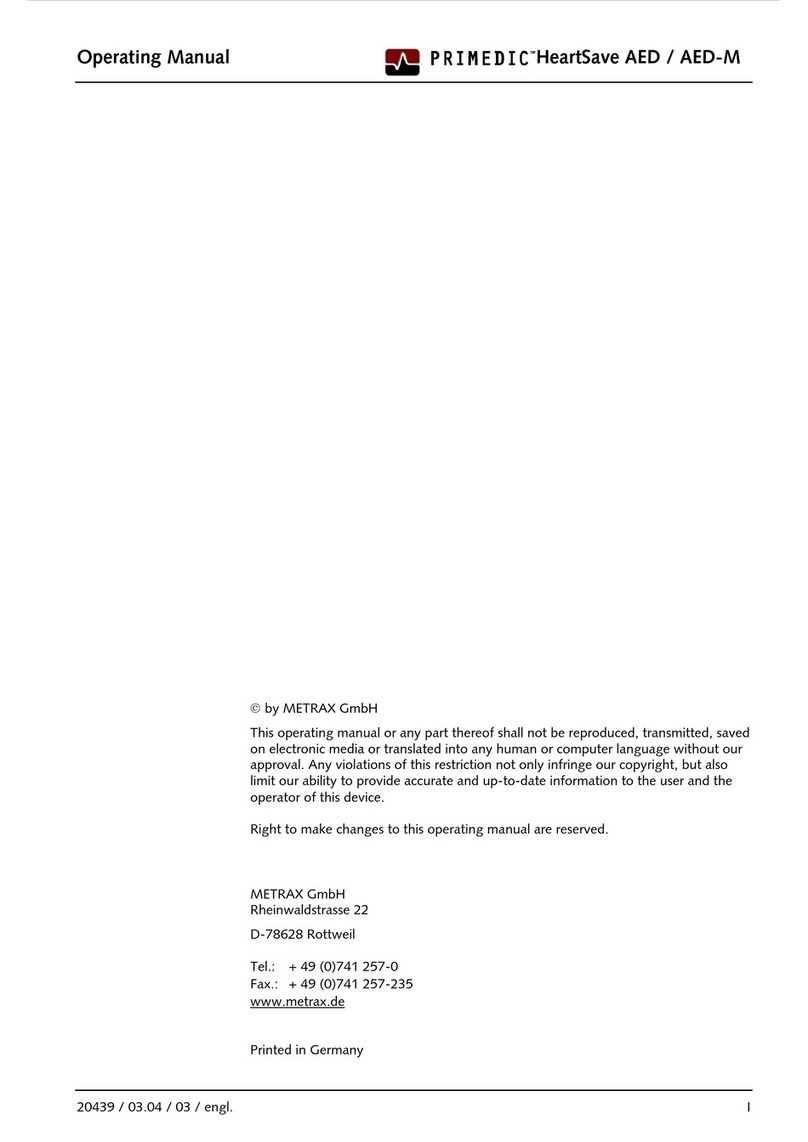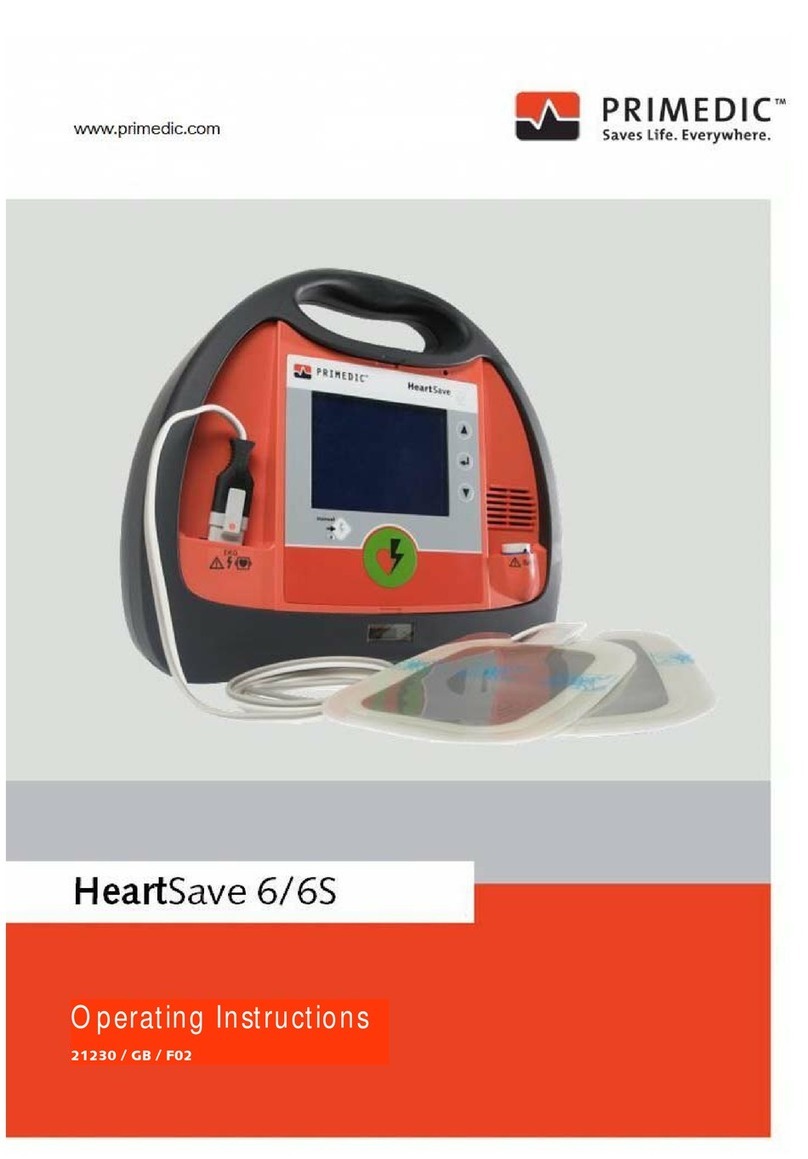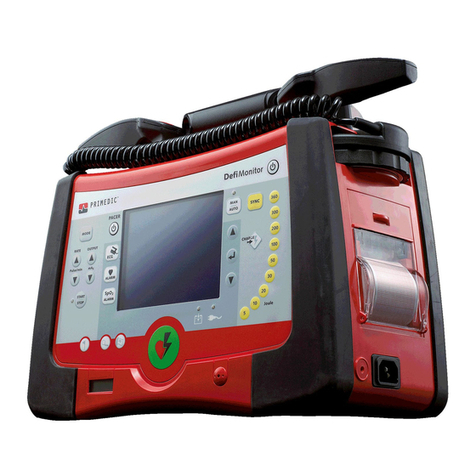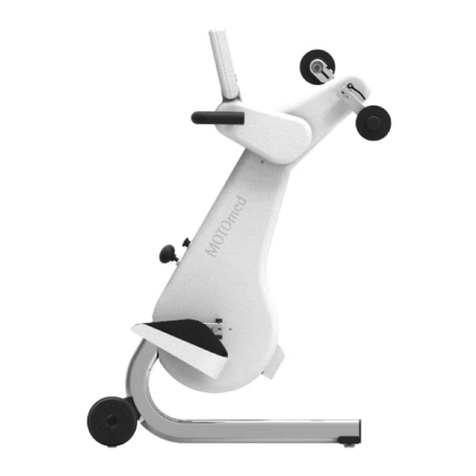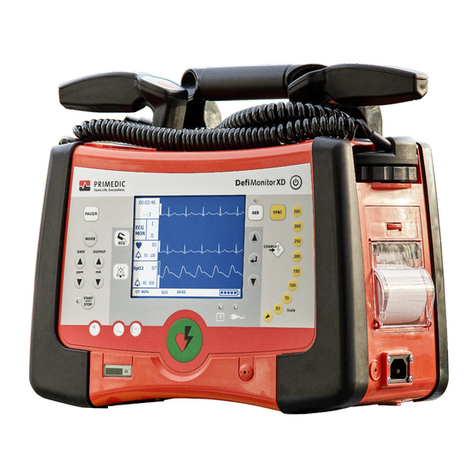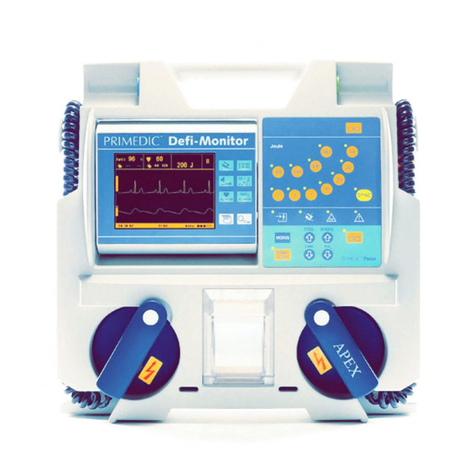
Table of contents
HeartSave AED / AED-M I
Table of contents
1 Introduction 1
1.1 Foreword.....................................................................................................................1
1.2 Validity........................................................................................................................1
1.3 Warranty.....................................................................................................................1
1.4 Disclaimers ..................................................................................................................2
1.5 Symbols used in these operating instructions................................................................2
1.6 Pictograms on the device.............................................................................................3
1.7 Pictograms on PRIMEDICTM SavePads ..........................................................................4
2 Intended use 4
2.1 Indications...................................................................................................................6
2.2 Contraindications.........................................................................................................6
3 Safety information 6
3.1 General information.....................................................................................................6
3.2 General safety instructions:..........................................................................................7
3.3 Safety notes for the user..............................................................................................8
3.4 Safety notes for protection of the patient.....................................................................8
3.5 Safety notes for the protection of third parties.............................................................9
3.6 Safety notes for protecting the device........................................................................10
4 Description of device 10
4.1 General description....................................................................................................10
4.2 Description of device details.......................................................................................11
4.3 Symbols in the status display......................................................................................14
4.4 Capacity display on the monitor.................................................................................15
4.5 Data management.....................................................................................................16
4.6 Description of the accessories ....................................................................................17
4.6.1 PRIMEDICTM SavePads AED............................................................................17
4.6.2 PRIMEDICTM battery.......................................................................................17
4.6.3 PRIMEDIC™ ECG-patient cable, 2-core (Optional accessory for PRIMEDICTM
AED-M).........................................................................................................18
5 Preparatory measures before (initial) start-up 19
5.1 Unpacking.................................................................................................................19
5.2 Inserting / Changing the PRIMEDICTM SaveCard ........................................................19
5.2.1 Inserting the PRIMEDICTM SaveCard ...............................................................20
5.2.2 Changing the PRIMEDICTM SaveCard..............................................................20
5.3 Inserting / replacing the energy module.....................................................................20
5.3.1 Inserting the power module............................................................................21
5.3.2 Removing the power module from the device ................................................22
5.4 PRIMEDICTM battery...................................................................................................23
5.5 PRIMEDIC™ AkuPak (optional).................................................................................23
5.5.1 Charging the PRIMEDICTM AkuPak with the PRIMEDICTM ClipCharger ............25
5.5.2 Loading the PRIMEDIC TM battery pack in the optional charger Basic /
Comfort.........................................................................................................26
5.5.3 Connecting up the PRIMEDIC TM PowerLine (optional accessory)....................26
5.6 Periodic device self-test..............................................................................................26
5.6.1 Self-test after switching on the PRIMEDICTM HeartSave devices ......................26
5.6.2 Periodic self-tests ...........................................................................................27
5.7 Configuration of the PRIMEDIC™ HeartSave.............................................................27
5.7.1 Configuration of the PRIMEDIC™ HeartSave AED (without monitor).............27
5.7.2 Configuration of the PRIMEDIC™ HeartSave AED-M (with monitor) .............27
5.8 Simple change of configuration – example: Time .......................................................29
5.9 Changing the PIN......................................................................................................29
5.10 Calling up/activating a profile....................................................................................30




















